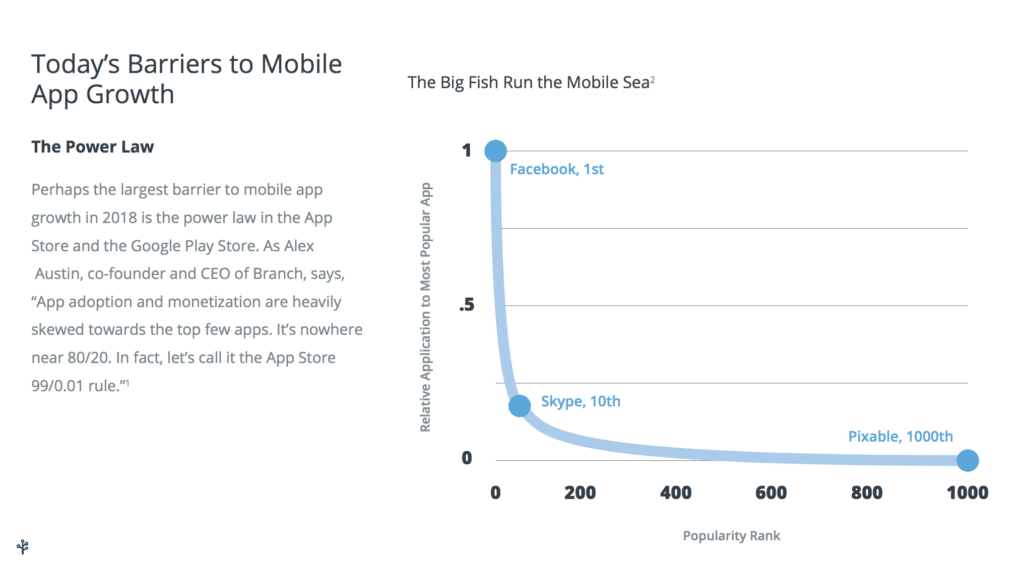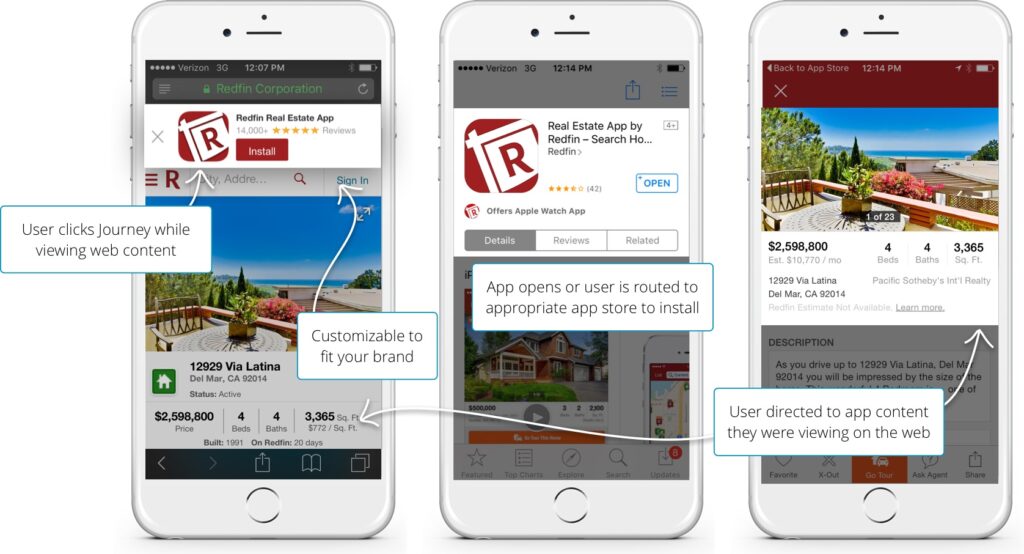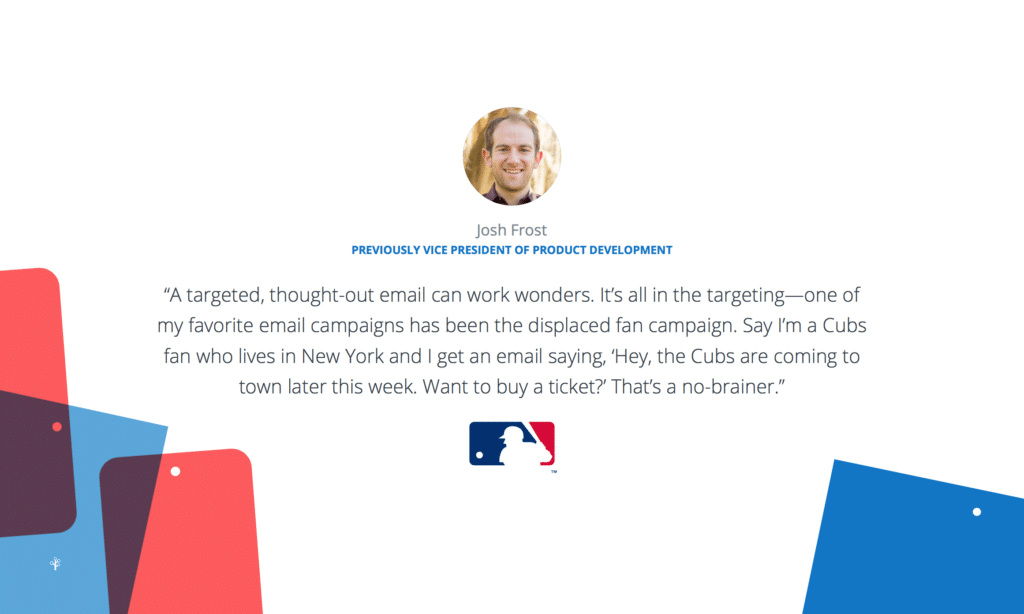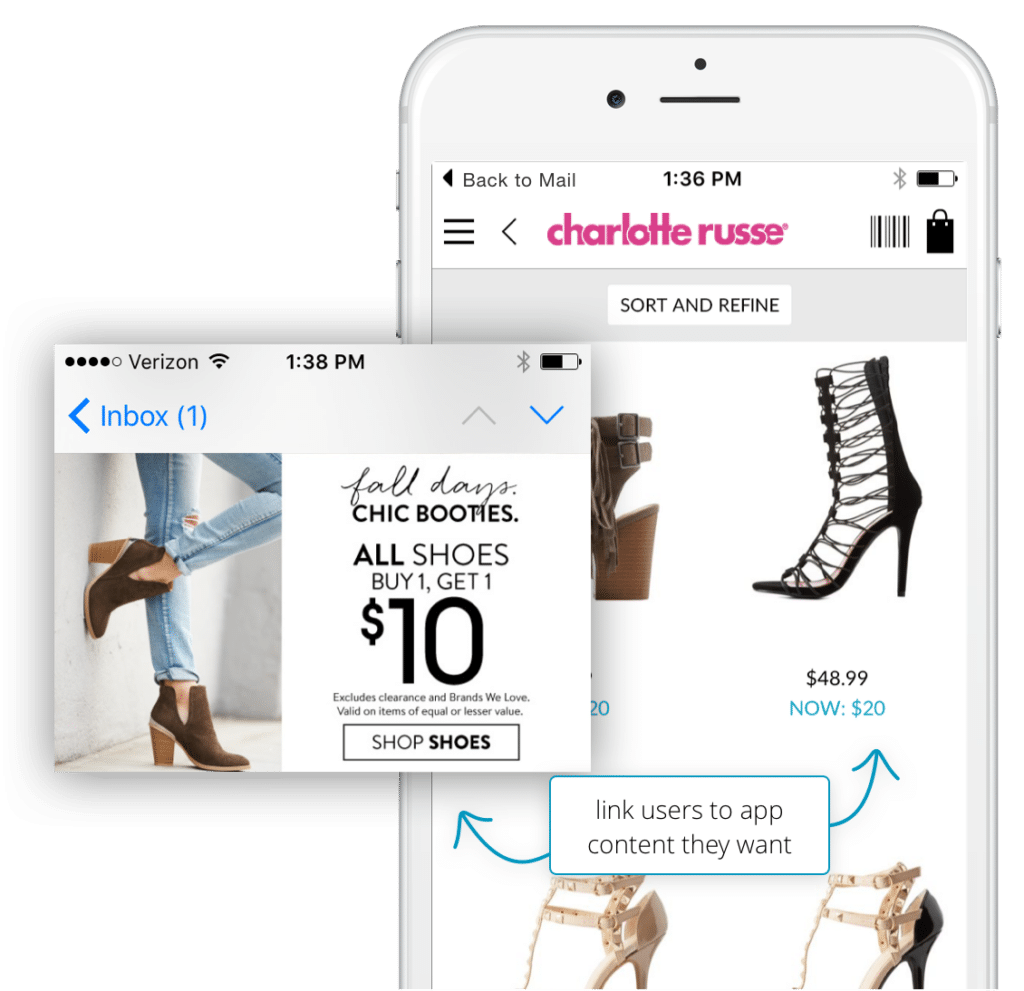Every mobile marketer today is asking the same few questions: How can I drive cross-channel growth for my app through mobile app marketing campaigns, and which mobile marketing channels will actually perform? What are the best ways to market an app, and what’s the best mobile app marketing strategy?
While App Annie reports that consumer app store spending will surpass $110 billion this year, mobile marketers face struggle to stand out and drive installs in the crowded mobile app space.
Here’s why: Experts estimate that between the Apple App Store and the Google Play Store, there are roughly 5.6 million apps available to users in 2018. Perhaps the leading barrier to mobile app growth in 2018 is the resulting power law—Statista reports that downloads in the Americas are predicted to nearly double by 2021, but that won’t make a difference for your mobile app if those users are only downloading the top 100 apps that dominate the market.
It’s no longer enough for marketers to rely on app store placement and good fortune as a mobile app marketing strategy. In this day and age, there are a few marketing strategies for apps that — despite an ever-increasing mobile app market size — marketers use to consistently drive growth. In order to attract and retain organic—or even paid—mobile users, mobile marketers and product professionals must strategically leverage every channel in their mobile growth stack.
With competition this stiff, and with a mobile app market this large, it’s crucial to find the right marketing channels to drive installs in Q3, Q4, and beyond. And if certain channels aren’t performing the way you’d hoped, now’s the time to adjust your focus – and your mobile spend.
So, which key channels are today’s leading mobile growth experts focusing on right now? Here’s an in-depth exploration of three tried-and-true marketing channels that some of today’s leading mobile brands use to drive continued growth.
Audit Your Web (and Mobile) SEO Performance—and then Optimize Web-to-App Journeys
According to Forbes, 75% of users never scroll past the first page of Google’s search results—therefore, optimizing web and mobile SEO performance is absolutely crucial for mobile app discoverability. In a world where 60% of all web searches lead to the first three organic search results, if your web SEO game is off, there’s a good chance that users who are looking for your app aren’t even finding it. And if they can’t find you, they can’t learn about what your app does and why they need to download it.
So, how should you make sure you’re maximizing web SEO to drive organic traffic and installs? Now’s a great time for an SEO audit of your website, blog posts, and landing pages. Courtesy of Neil Patel, key areas to review include:
- Double-checking meta titles and descriptions
- Optimizing page titles for SEO keywords
- Ensuring URL structure is optimized for search engines
Furthermore, the best mobile marketers know to distinguish the web from the mobile web (yes, there is a difference!). While desktop SEO tactics usually also improve and optimize mobile SEO, there are also a number of measures you can take to specifically improve your app’s mobile web SEO health. It’s therefore critical that you consider how your mobile app can pass Google’s Mobile-Friendly Test.
Optimizing web and mobile SEO performance can be a big step toward ensuring interested mobile users find you when they need to, and that they learn enough about your mobile app to drive them to download it. Equally important, however, is seamlessly routing mobile web users into the mobile app, where activation, engagement, and retention rates skyrocket. After all, mobile app users spend 20x more time in-app than mobile web users spend in the mobile web.
This is where customizable and targeted web-to-app smart banners can do the trick. (Unlike intrusive interstitials, Branch’s web-to-app Journeys solution fully complies with Google’s regulations. As an added bonus, since you can use Journeys to target users based on referrer source, you can serve full-page interstitials to users coming from social, email, and non-SERP sources, should you please.) Branch’s Journeys can be especially effective because they deep link users to in-app content directly even in the case of mobile app install. In this way, both new and veteran users can get a first-class trip from your mobile website into the app.
Ensure Marketing Emails Perform and Drive Seamless Mobile User Experiences
More than 70% of emails are opened on mobile according to Branch data—and that number is only climbing as the year progresses. Companies who guide their prospects down the mobile acquisition funnel through email are poised to increase mobile revenue.
When it comes to driving mobile revenue from email, it’s essential to double check that you’ve got a wide variety of areas covered. First thing’s first: Subject lines make or break mobile email performance. Are your subject lines short and sweet? If not, now’s the time to test that approach.
Email also presents a fantastic opportunity to build personal relationships with both existing and prospective mobile users. Personalization is most reliably implemented based on previous user behavior—the more you can align content with the value prop that convinced each user to sign up for your emails in the first place, the better. Therefore, if you’re looking for a place to begin personalizing marketing emails, try personalizing based on user behavior or previously-collected demographic information (something to consider when optimizing your app onboarding process!). For now, consider mobile expert Josh Frost’s approach to personalized emails for the MLB, through what he terms “displaced fan campaigns.”
The next area of optimization when maximizing email marketing mobile growth relates to links. The value of ensuring email marketing links work on mobile cannot be understated.
What’s equally important, however, is following your user’s journey to make sure they land in the right place, on the right content, every time.
This has been notoriously difficult for marketers who rely on traditional links—after all, more often than not, the mobile web drops users at a login page. Here’s the problem with that: According to Criteo’s Mobile Commerce Report, nearly 300% more products are viewed per user in the app, the average user’s add-to-basket-rate is nearly 100% higher in the app, and conversion rate rises 120% in the app. Clearly, the stakes are high and the consequences of routing users to the mobile web from marketing emails can be grave.
The trick therefore becomes encouraging users to download your mobile app (using the aforementioned smart banners), and then making sure you’re routing users directly to desired content in the app, where they’re logged in and ready to convert. You deserve a linking infrastructure that’s as smart as your campaign strategy—you’d be surprised how far deep linking in marketing emails can go in mending disjointed user experiences and increasing overall conversions.
As a final note, it’s important to underscore that scale matters—especially on mobile. Make sure your fonts, imagery, and buttons are scaling properly. The last thing you want is for a campaign to tank because your offers, imagery, or buttons are broken or ill-sized for the mobile view or the mobile click. (Clicking your link or button shouldn’t feel like hitting a bullseye!)
Create the Perfect App-to-App Partnership
Here’s where you can really get creative. Deep linking can turn the right app-to-app partnerships into a boost in installs and engagement if you find the right brand to compliment yours.
Perfect example: Personalized food and recipe discovery app Yummly wanted to create a delightful experience for users – but it knew it needed the right partner. The company worked with one-hour grocery delivery powerhouse Instacart to allow its users to instantly order recipe ingredients that could be at their door in no time. The result: A 35% boost in one-week retention, a 28% jump in items added to lists, and 10% of U.S. customers taking advantage of the new partnership.
Want to find similar success? Think about an app that’s complementary to yours—you probably already have at least a few ideas just from your familiarity with your mobile app and your industry. Figure out how your product or service and their product or service create a strategic partnership that will lead to a joint increase in mobile app user install count, engagement rate, and conversion rate.
Here’s the bottom line: Competition for mobile apps is stiffer than ever—there are more mobile apps available to users around the world, and still more with each passing day—but it’s still possible to achieve mobile growth with a smart cross-channel marketing approach. It’s all about focusing on the right channels and working with an attribution solution that connects users across channels and across platforms, so you can invest in what’s truly working.
For far more mobile app install tips and best practices across all of the channels that could land in your growth marketing tech stack (and more), and to create an app experience that drives unprecedented app adoption, engagement, and revenue, download a free copy of our 2018 Mobile Growth Handbook. To learn more about how Branch can bring out the best in your app through customizable smart banners, deep linked marketing emails, seamless app-to-app partnerships, cross-platform attribution, and more, request a demo today.


























